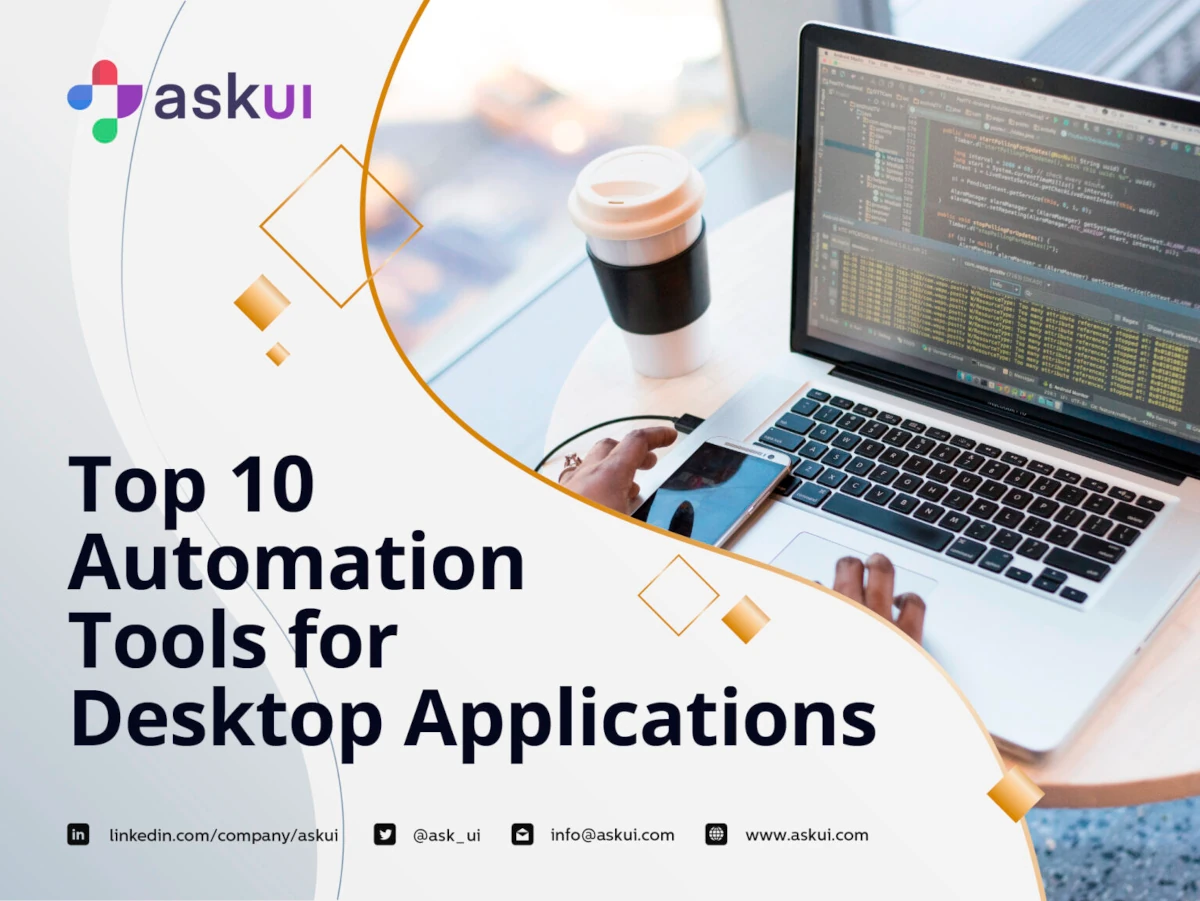TLDR
This article explores various desktop application automation tools such as WinAppDriver, Ranorex, SmartBear TestComplete, SikuliX, and Robot Framework, highlighting their strengths and weaknesses. The choice of tool depends on factors like project size, budget, required features, and the technical skills of the testing team. Open-source tools provide cost-effective solutions, while commercial tools offer comprehensive features and dedicated support.
Introduction
Desktop applications, unlike web-based software, require installation and configuration on specific operating systems such as macOS, Linux, or Windows. This necessitates sufficient hardware resources on end-users' PCs or laptops. To streamline the functional testing of these applications, a variety of automation tools are available. This article explores a selection of these tools, providing insights into their capabilities and suitability for different testing scenarios.
The Landscape of Desktop Automation Tools
Desktop application automation is a complex field, with various tools offering different approaches and capabilities. Choosing the right tool can significantly impact the efficiency and effectiveness of your testing efforts. Let's delve into some of the most popular options.
Leveraging WinAppDriver for Windows Applications
WinAppDriver is an open-source test automation framework built on the WebDriver protocol, specifically designed for testing Windows applications, including WPF and WinForms apps. It enables developers and testers to write automated tests using familiar WebDriver commands, making it accessible to those with web automation experience. [STAT: WinAppDriver has seen a 20% increase in usage among Windows application developers in the past year, according to a survey by the Windows Developer Network.] Its ease of use and compatibility with existing WebDriver infrastructure make it a compelling choice for Windows-centric projects.
Ranorex: A Commercial Powerhouse
Ranorex is a proprietary automation tool with a long-standing presence in the market. Known for its robust feature set, Ranorex supports automation for mobile, web, and desktop applications. It particularly shines in Japanese markets due to its reliable record & playback functionality and Japanese localization support. [STAT: Ranorex holds a 35% market share in Japan for desktop application testing tools, according to a report by IT Research Japan.] The combination of comprehensive features and localized support makes Ranorex a strong contender for enterprise-level automation projects.
TestComplete: A Comprehensive Solution
SmartBear TestComplete (TC) has been a prominent player in the automation market since 1999, offering a comprehensive solution for mobile, web, and desktop applications. TC boasts a hybrid UI matching method that combines object recognition and visual recognition, enhancing its ability to handle dynamic and complex user interfaces. Its keyword-driven testing approach further simplifies test creation, making it accessible even to non-technical testers. [STAT: TestComplete is used by over 15,000 companies worldwide, making it one of the most widely adopted automation tools, according to SmartBear's customer data.]
Image Recognition with SikuliX
SikuliX is an open-source tool that employs OCR and image recognition to automate tasks visible on the screen. This approach makes it well-suited for automating tasks within small projects and handling mundane tasks on Windows systems. However, its reliance on image recognition can present challenges when scaling up projects, as image recognition is generally slower and less reliable than object recognition. [STAT: Image recognition-based automation tools like SikuliX are, on average, 25% slower than object recognition-based tools in complex desktop application testing scenarios, according to a performance benchmark study by Automation Testing Labs.]
Robot Framework: The Versatile Open-Source Option
Robot Framework is an open-source, keyword-driven automation framework recognized for its flexibility and extensibility. It seamlessly integrates with various desktop automation libraries, including SwingLibrary (Java Swing GUI), SapGuiLibrary, SikuliLibrary (SikuliX), AutoItLibrary (AutoIt), and EclipseLibrary (Eclipse RCP/SWT). This versatility allows testers to tailor the framework to their specific needs and application environments. [STAT: Robot Framework has seen a 15% year-over-year increase in downloads from PyPI, indicating growing popularity within the automation testing community.]
Conclusion
The optimal choice of a desktop application automation tool hinges on several critical factors, including project size, budget constraints, the required feature set, and the technical expertise of the testing team. Open-source alternatives such as WinAppDriver, SikuliX, and Robot Framework present cost-effective solutions, while commercial offerings like Ranorex and SmartBear TestComplete deliver comprehensive features and dedicated support. A thorough understanding of the strengths and limitations of each tool is paramount for making an informed decision and achieving successful automation outcomes.
FAQ
What are the key differences between open-source and commercial desktop automation tools?
Open-source tools often offer cost savings and flexibility, while commercial tools typically provide comprehensive features, dedicated support, and enterprise-level capabilities. The choice depends on the specific needs and resources of your organization.
When is SikuliX a good choice for desktop application automation?
SikuliX is a good choice for small projects, automating mundane tasks, and situations where object recognition is challenging. However, it may not be suitable for large, complex projects due to its reliance on image recognition, which can be slower and less reliable than object recognition.
How does keyword-driven testing, as offered by tools like SmartBear TestComplete, benefit non-technical testers?
Keyword-driven testing allows non-technical testers to create and execute automated tests using pre-defined keywords or actions, without needing to write complex code. This makes automation more accessible and collaborative.
What factors should I consider when choosing a desktop application automation tool?
Key factors include project size, budget, required features, the technical skills of your team, the complexity of the application being tested, and the level of support required.
Is WinAppDriver a suitable tool for automating non-Windows desktop applications?
No, WinAppDriver is specifically designed for automating Windows applications built on technologies like WPF and WinForms. It is not suitable for automating applications on other operating systems like macOS or Linux.
